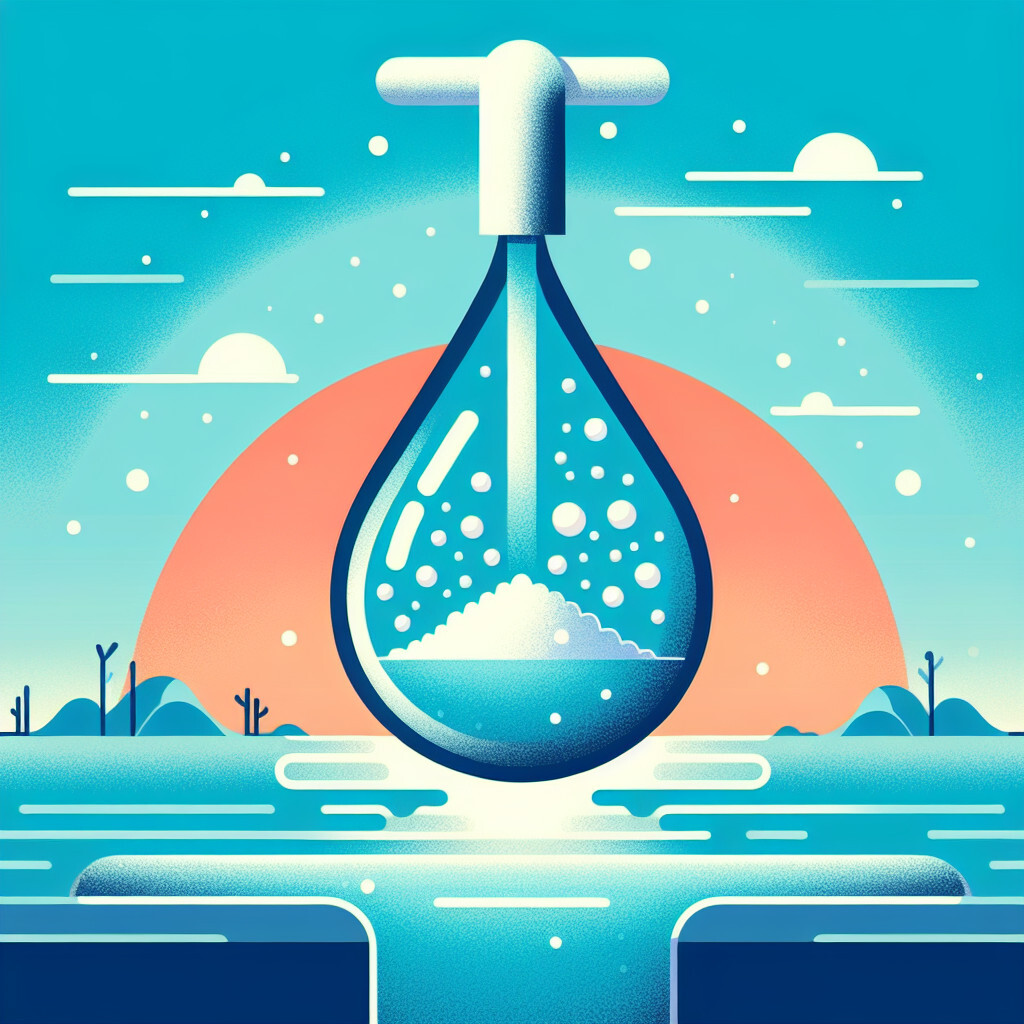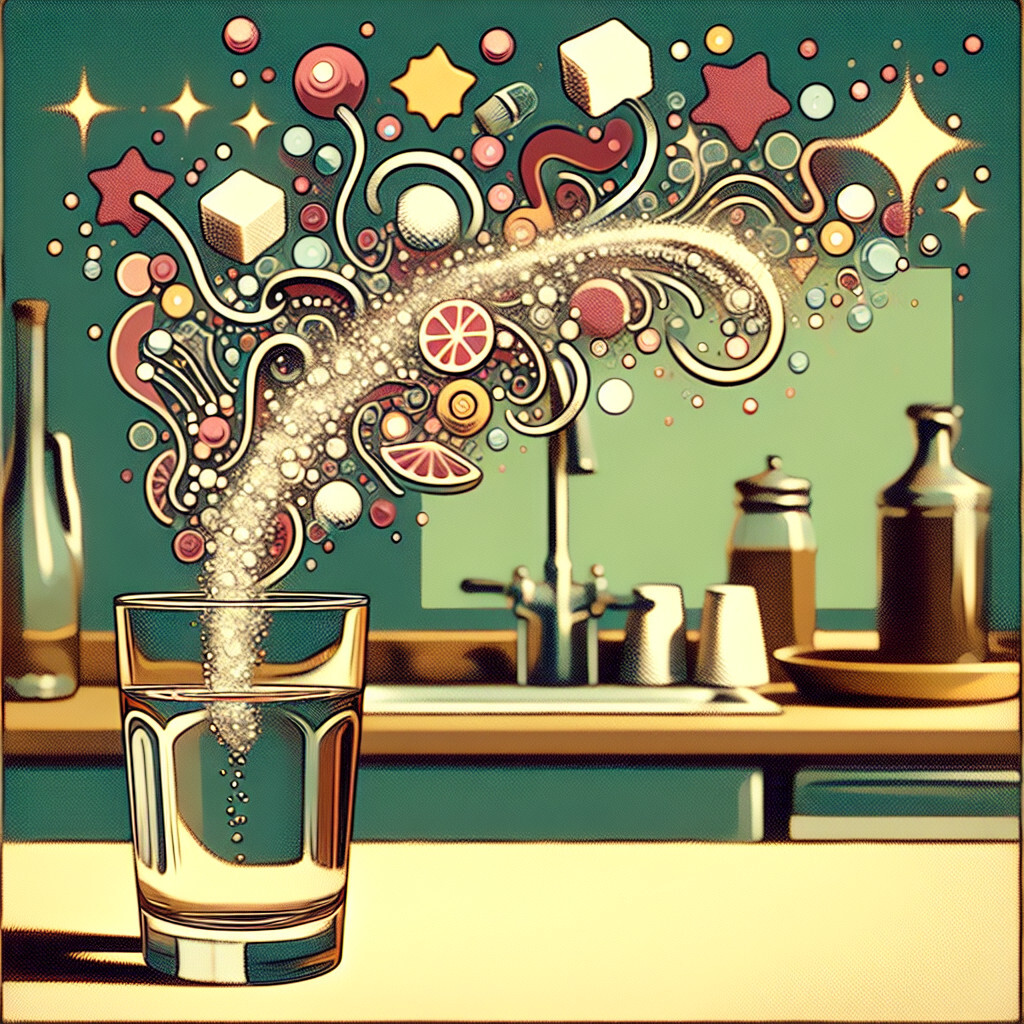-
Table of Contents
“Tap water: Straight from your faucet, enriched with minerals. Distilled water: Pure, evaporated and condensed for absolute purity.”
Introduction

Tap water and distilled water are both forms of water, but they differ significantly in their purification process and content. Tap water, sourced from underground or surface water bodies, undergoes a treatment process to remove harmful substances and is often enriched with minerals like calcium and magnesium. It may also contain trace amounts of chlorine and fluoride for disinfection and dental health purposes. On the other hand, distilled water undergoes distillation, a process involving boiling the water and collecting the steam, which leaves behind virtually all impurities and minerals. This results in a pure form of water, devoid of any minerals or contaminants.
Understanding the Differences: Tap Water vs Distilled Water
Understanding the differences between tap water and distilled water is crucial in making informed decisions about the water we consume daily. Both types of water are widely used, but they differ significantly in their composition, taste, and uses due to the processes they undergo before reaching the consumer.
Tap water, as the name suggests, is the water that flows from our taps at home. It is sourced from natural bodies of water such as rivers, lakes, or underground reservoirs. Before it reaches our homes, tap water is treated at local water treatment facilities to remove harmful substances and bacteria. This process typically involves filtration and the addition of chemicals like chlorine to kill bacteria and other microorganisms. Despite this treatment, tap water often retains some minerals, such as calcium and magnesium, which can affect its taste and hardness. The quality and taste of tap water can vary greatly depending on the region and the effectiveness of local water treatment processes.
On the other hand, distilled water undergoes a more rigorous purification process known as distillation. This involves boiling the water and then condensing the steam back into a liquid in a separate container. This process effectively removes most impurities, including minerals, bacteria, and chemicals. As a result, distilled water is often described as ‘pure’ water. However, this purity comes with a downside. The lack of minerals in distilled water gives it a flat or bland taste, which some people find less appealing than tap water.
The differences between tap water and distilled water extend beyond taste and composition. These differences also impact their respective uses. Tap water, with its mineral content, is generally suitable for everyday activities such as drinking, cooking, and bathing. The minerals in tap water can even contribute to our daily nutritional needs. For instance, calcium and magnesium are essential for bone health, and some tap water sources can provide a significant amount of these minerals.
Distilled water, with its high purity, is often used in situations where water quality is critical. This includes scientific and medical applications, where the presence of impurities could interfere with results or procedures. Distilled water is also used in car batteries and cooling systems, as the absence of minerals prevents build-up and corrosion. However, due to its lack of minerals, distilled water is not typically recommended for regular drinking. While it’s safe to drink, it doesn’t provide the minerals that our bodies need from water.
In conclusion, while both tap water and distilled water are safe for consumption, they differ significantly in their composition, taste, and uses. Tap water contains minerals and may have a more pleasant taste, making it suitable for everyday use. Distilled water, being highly pure, is used in situations where water quality is critical, but its lack of minerals makes it less suitable for regular drinking. Understanding these differences can help us make informed decisions about the water we use and consume.
Health Implications: Comparing Tap Water and Distilled Water
Water is a fundamental necessity for life, and its quality significantly impacts our health. Two common types of water we encounter daily are tap water and distilled water. While they may seem similar, they differ in several aspects, including their source, treatment process, and health implications.
Tap water is the water that we get directly from our faucets. It is sourced from natural bodies of water like rivers, lakes, or underground reservoirs. Before it reaches our homes, tap water undergoes a series of treatments to remove harmful substances and pathogens. These treatments typically include filtration, sedimentation, and disinfection. Despite these processes, tap water often retains some minerals like calcium, magnesium, and potassium, which are beneficial to our health. However, the quality of tap water can vary greatly depending on the location. In some areas, tap water may contain contaminants like lead, pesticides, or bacteria, which can pose health risks.
On the other hand, distilled water is water that has undergone distillation, a process that involves boiling the water and then condensing the steam into a clean container. This process removes impurities and minerals, resulting in pure water. Distilled water is often used in laboratories, medical facilities, and automotive cooling systems due to its purity. However, because distillation removes all minerals, distilled water does not provide the same nutritional benefits as tap water.
When it comes to health implications, both tap water and distilled water have their advantages and disadvantages. Tap water, assuming it is of good quality, can contribute to our daily intake of essential minerals. These minerals are necessary for various bodily functions, including bone health, heart health, and maintaining electrolyte balance. However, if the tap water is contaminated, it can lead to health issues like gastrointestinal problems, neurological disorders, and reproductive issues.
Distilled water, being free from contaminants, is safe to drink and poses no such risks. It can be particularly beneficial for people with compromised immune systems, who are more susceptible to infections from waterborne pathogens. However, the lack of minerals in distilled water means it does not contribute to our nutritional needs. Moreover, drinking distilled water exclusively can potentially lead to mineral deficiencies, as it can also leach minerals from the body. This is because distilled water, being slightly acidic, can pull minerals from whatever it comes into contact with, including our bodies.
In conclusion, both tap water and distilled water have their place in our lives. Tap water, provided it is of good quality, is a cost-effective and convenient source of hydration and essential minerals. Distilled water, with its high purity, is useful in settings that require uncontaminated water and can be a safe drinking option for those with specific health concerns. However, it is not a good source of minerals. Therefore, if one chooses to drink distilled water regularly, it is important to ensure adequate mineral intake from other dietary sources. As always, it is crucial to consider the quality of your local tap water and consult with a healthcare professional if you have any concerns about your water consumption and its impact on your health.
The Science Behind Tap Water and Distilled Water: A Comparative Study
Water is a fundamental necessity for life, and its quality significantly impacts our health and wellbeing. Two common types of water that we encounter in our daily lives are tap water and distilled water. While they may seem similar, there are distinct differences between them, primarily in their composition, purification process, and usage.
Tap water is the water that we get directly from our faucets at home. It originates from natural sources like rivers, lakes, and underground reservoirs. Before it reaches our homes, it undergoes a series of treatments at water treatment plants to remove harmful substances and pathogens. These treatments typically include filtration, sedimentation, and disinfection processes. Despite these treatments, tap water often retains some minerals like calcium, magnesium, and potassium, which are beneficial for our health. However, it may also contain trace amounts of impurities like heavy metals and chlorine, depending on the quality of the source water and the effectiveness of the treatment process.
On the other hand, distilled water is produced through a specific process called distillation. This involves boiling the water and then condensing the steam back into a liquid form. The primary purpose of distillation is to remove all impurities and minerals from the water. As a result, distilled water is pure H2O, devoid of any minerals or contaminants. This high level of purity makes distilled water an excellent choice for specific applications where water quality is critical, such as in laboratories, medical facilities, and certain industrial processes.
However, the absence of minerals in distilled water also has its drawbacks. For instance, it can taste flat or bland to some people because the minerals that enhance water’s natural flavor are missing. Moreover, when used for drinking, it does not provide the essential minerals that tap water does. Some studies also suggest that consuming distilled water can potentially leach minerals from the body, leading to mineral deficiencies over time.
The choice between tap water and distilled water often depends on the specific requirements and circumstances. For everyday drinking and household use, tap water is generally sufficient, provided it is safe and meets the local and international water quality standards. It is also more environmentally friendly as it requires less energy to produce compared to distilled water.
On the other hand, distilled water is the preferred choice for certain applications where high water purity is required. However, due to its lack of minerals, it is not typically recommended for regular consumption. If one chooses to drink distilled water, it is advisable to ensure an adequate intake of essential minerals from other dietary sources.
In conclusion, while both tap water and distilled water are vital for various purposes, they differ significantly in their composition, production process, and usage. Understanding these differences can help us make informed decisions about the type of water that is most suitable for our specific needs and circumstances. As we continue to strive for better health and a sustainable environment, it is crucial to consider these factors in our water consumption habits.
Tap Water or Distilled Water: Which is Better for Your Health?
Tap water and distilled water are two common types of water that we consume daily. However, many people are not aware of the differences between these two types of water, and how these differences can impact our health. This article aims to shed light on the distinctions between tap water and distilled water, and to provide insights into which type of water is better for your health.
Tap water is the water that we get directly from our faucets. It is sourced from local reservoirs, rivers, or wells, and is treated at water treatment plants to remove harmful substances and pathogens. The treatment process typically involves filtration, disinfection, and the addition of chemicals to kill bacteria and other microorganisms. In many developed countries, tap water is safe to drink and is regularly tested to ensure it meets health standards. However, the quality of tap water can vary depending on the location and the effectiveness of the water treatment process.
On the other hand, distilled water is water that has undergone a specific process called distillation. This process involves boiling the water and then condensing the steam back into a liquid. The purpose of distillation is to remove impurities, including minerals, bacteria, viruses, and chemicals. As a result, distilled water is pure H2O, with virtually no other substances present.
The primary difference between tap water and distilled water lies in their mineral content. Tap water contains various minerals such as calcium, magnesium, and potassium, which are essential for our health. These minerals contribute to the taste of tap water and also play crucial roles in our body functions. For instance, calcium is necessary for bone health, while magnesium supports nerve and muscle function.
In contrast, distilled water lacks these beneficial minerals because the distillation process removes them. While this results in pure water, it also means that distilled water does not provide the same nutritional benefits as tap water. Moreover, because distilled water is devoid of minerals, it can taste flat or bland to some people.
So, which type of water is better for your health? The answer depends on your specific needs and circumstances. If you live in an area with high-quality tap water, drinking tap water can be a good way to get essential minerals. However, if your tap water is contaminated or if you are at risk of certain health conditions, distilled water may be a safer choice. For instance, people with kidney disease may benefit from drinking distilled water because it is free of potassium and phosphorus, which they need to limit.
It’s also worth noting that while distilled water lacks minerals, you can get these nutrients from other sources, such as food. Therefore, if you prefer the taste of distilled water or if you need to drink it for health reasons, you can still maintain a balanced diet by eating a variety of nutrient-rich foods.
In conclusion, both tap water and distilled water have their pros and cons. Tap water contains beneficial minerals but its quality can vary, while distilled water is pure but lacks these minerals. Ultimately, the best type of water to drink depends on your individual health needs, your local water quality, and your personal preference.
Q&A
1. Question: What is the main difference between tap water and distilled water?
Answer: The main difference is that distilled water has gone through a process of distillation that removes all minerals and impurities, while tap water contains various dissolved substances such as minerals, salts, and possibly contaminants.
2. Question: How does the taste of tap water and distilled water differ?
Answer: Distilled water often tastes flat or bland because it lacks the minerals and salts found in tap water that contribute to flavor.
3. Question: Is there a difference in the health benefits of tap water and distilled water?
Answer: Tap water often contains minerals like calcium and magnesium which are beneficial for health. Distilled water, on the other hand, lacks these minerals, making it less beneficial for regular consumption.
4. Question: How does the process of obtaining tap water differ from that of distilled water?
Answer: Tap water is typically sourced from lakes, rivers, or underground sources and goes through a treatment process to remove most contaminants. Distilled water, however, is created through distillation, a process that involves boiling the water and then condensing the steam into a clean container, leaving behind nearly all of the impurities and minerals.
Conclusion
Tap water and distilled water differ primarily in their purity and content. Tap water contains various minerals like calcium and magnesium, and potentially trace amounts of pollutants or chemicals used in water treatment, depending on the source and local regulations. Distilled water, on the other hand, undergoes a process of distillation that removes all minerals and impurities, resulting in pure H2O. This makes distilled water taste flat to some people and potentially less beneficial or even harmful if consumed in large amounts due to the lack of essential minerals.






